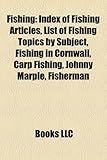Rods are basically made from carbon. Plastic, composite carbon combined with Kevlar, which is a kind of material that is bullet proof, or just high carbon. Since the carbon’s force and strength in connection to its mass is light, making it strong material that can allow thinner fabrication but still is able to keep the span and length. A rod that is lighter evidently handling will be easier, controlling it would be less tiring on ones arms and reduces resistance to air giving one an easier time accurately casting it, particularly on windy ways.
Rods come in silicon carbide, hard chrome or ceramic rings having a function of letting the line pass through. These are precisely used because of their smoothness having the function to minimize friction when passing through the line and keep the maximum strength. Silicon materials are a fact costly, so an alternative is bring into play ceramic rings like Zircon which when taken in to account, it is not as tough or as light, but is much cost effective. Rings made of chrome are better, although every season they require replacement, they do deliver excellent job of line running. At least thirteen rings are needed from the handle all through the tip, lesser near the handle, needing more close to the tip. The line can fasten itself to the rod, if you don’t have enough rings.
When determining length of the rod, you want to take into account exactly what kind of fishing you want. If you want far out fishing, in that case choose a larger rod as this will offer you better control when you are playing the fish. If you are planning to go fishing in an area that is enclosed, you will need a shorter rod. Normally, the safe rod size to choose is13ft (3.9m). This is lengthy enough for a waggler but does not cast out too far.
Handles
Handles are made from either cork or foam. Whichever you choose, this is a matter of preference. Just try handling both materials so you can have a good “feel” before buying it.
Action
Action is the term used in describing how the rod will bend when it is placed under the lot of strain and effort of a fighting fish.
There are two types of tip on a rod, the hollow and spliced tips. Hollow tips are good in catching carp, tench and chub which have a progressive or developing action making it sharp for quick bites, yet proficient enough to manage long distance strikes. Spliced tips normally are normally spliced to the end with two feet solid carbon. This rod is sharper so it is a good pick for fast acting fish.
When choosing a rod, these questions will help you pick the right one:
1. How frequent and where do you fish? Are you a beginner, a weekend warrior, or a tournament pro? If you are just starting out, you may need to budget and spend less money on your first rod. Once you learn the techniques and once you have decided that fishing is for you, that is the time to spend on more specific rods.
2. Freshwater or Saltwater fish? While there are a few rods that can be used for both fresh and saltwater fish, most rods are made for a specific purpose and application.
3. Spinning or Casting? The species you that you choose to chase will determine it.
4. Power, sensitivity, and your technique. The rod should match the way you enjoy fishing. If you like to fish with lures, then you should look for a rod that is comfortable enough to cast frequently all day long.
To read about bowhunting turkey and bowhunting whitetails, visit the Bowhunting Tips site.
